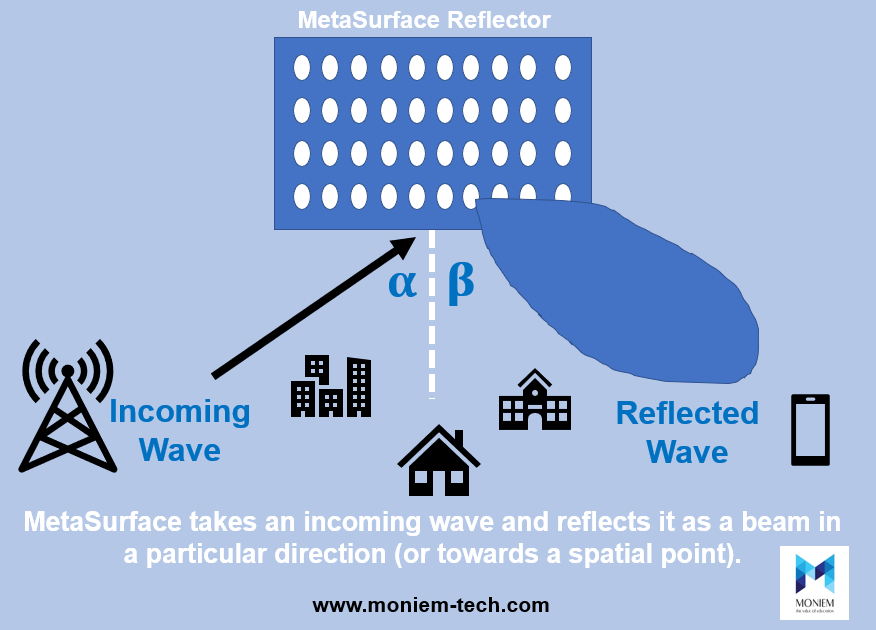The first thing that came to my mind when Facebook CEO Mark announced to change the name of his mega applications (Facebook, WhatsApp, Messenger, Instagram, .. etc) to META or Metaverse technology, is METASURFACE.

What is Metamaterial?
The prefix meta (a Greek word meaning ‘beyond’) indicates that the characteristics of the material are beyond what we see in nature. Metamaterials are a novel class of functional materials that are designed around unique micro- and nanoscale patterns or structures, which cause them to interact with light and other forms of energy in ways not found in nature.
So metamaterial is an artificial material that causes EM waves to behave in ways that they do not in natural materials. also there’s another definition is called Metasurface.
What is Metasurface?
A metasurface is an artificial nanostructured interface that has a subwavelength thickness and that manipulates light by spatially arranged meta-atoms—fundamental building blocks of the metasurface. Those meta-atoms, usually consisting of plasmonic or dielectric nanoantennas, can directly change light properties such as phase, amplitude, and polarization.
Why Metasurface can be the optimum solution in 5G?
Metasurface can be used in 5G mmWave propagation waves environment to overcome the penetration loss in the mmWave 5G spectrum, as It improves the gain and the coverage in the same direction or on the other direction (by using reflector).

A tunable reflector component based on metasurface (MS) with a low profile and reduced mass is offered for indoor and outdoor 5G communication methods to overcome obstacles such as buildings, walls, and turns, and to allow wireless quasi-line of sight path communication at mmWave frequency (28GHz or 37GHz).
So as the above figure you can design the reflector with specific dimension to get enough power with specific incidence/ reflection angles.
Metasurface is like a Mirror but not reflecting the same image in same direction
